Comprehensive and quantitative proteomic analyses of zebrafish plasma reveals conserved protein profiles between genders and between zebrafish and human
- PMID: 27071722
- PMCID: PMC4829857
- DOI: 10.1038/srep24329
Comprehensive and quantitative proteomic analyses of zebrafish plasma reveals conserved protein profiles between genders and between zebrafish and human
Abstract
Omic approaches have been increasingly used in the zebrafish model for holistic understanding of molecular events and mechanisms of tissue functions. However, plasma is rarely used for omic profiling because of the technical challenges in collecting sufficient blood. In this study, we employed two mass spectrometric (MS) approaches for a comprehensive characterization of zebrafish plasma proteome, i.e. conventional shotgun liquid chromatography-tandem mass spectrometry (LC-MS/MS) for an overview study and quantitative SWATH (Sequential Window Acquisition of all THeoretical fragment-ion spectra) for comparison between genders. 959 proteins were identified in the shotgun profiling with estimated concentrations spanning almost five orders of magnitudes. Other than the presence of a few highly abundant female egg yolk precursor proteins (vitellogenins), the proteomic profiles of male and female plasmas were very similar in both number and abundance and there were basically no other highly gender-biased proteins. The types of plasma proteins based on IPA (Ingenuity Pathway Analysis) classification and tissue sources of production were also very similar. Furthermore, the zebrafish plasma proteome shares significant similarities with human plasma proteome, in particular in top abundant proteins including apolipoproteins and complements. Thus, the current study provided a valuable dataset for future evaluation of plasma proteins in zebrafish.
Figures
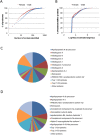
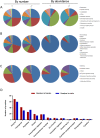
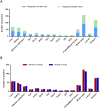
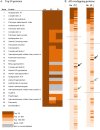
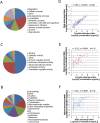

Similar articles
-
SWATH Mass Spectrometry for Proteomics of Non-Depleted Plasma.Methods Mol Biol. 2017;1619:373-383. doi: 10.1007/978-1-4939-7057-5_25. Methods Mol Biol. 2017. PMID: 28674897
-
In-depth comparative proteomic analysis of yeast proteome using iTRAQ and SWATH based MS.Mol Biosyst. 2015 Aug;11(8):2135-43. doi: 10.1039/c5mb00234f. Mol Biosyst. 2015. PMID: 26099114
-
Knock out of specific maternal vitellogenins in zebrafish (Danio rerio) evokes vital changes in egg proteomic profiles that resemble the phenotype of poor quality eggs.BMC Genomics. 2021 Apr 28;22(1):308. doi: 10.1186/s12864-021-07606-1. BMC Genomics. 2021. PMID: 33910518 Free PMC article.
-
Clinical veterinary proteomics: Techniques and approaches to decipher the animal plasma proteome.Vet J. 2017 Dec;230:6-12. doi: 10.1016/j.tvjl.2017.10.022. Epub 2017 Nov 11. Vet J. 2017. PMID: 29208216 Review.
-
Proteomics technologies for the global identification and quantification of proteins.Adv Protein Chem Struct Biol. 2010;80:1-44. doi: 10.1016/B978-0-12-381264-3.00001-1. Adv Protein Chem Struct Biol. 2010. PMID: 21109216 Review.
Cited by
-
Involvement of apolipoprotein A in maintaining tissue fluid balance in goldfish Carassius auratus.Fish Physiol Biochem. 2019 Oct;45(5):1717-1730. doi: 10.1007/s10695-019-00662-1. Epub 2019 Jun 21. Fish Physiol Biochem. 2019. PMID: 31227941
-
Zebrafish as a Suitable Model for Utilizing the Bioactivity of Coumarins and Coumarin-Based Compounds.Int J Mol Sci. 2025 Feb 8;26(4):1444. doi: 10.3390/ijms26041444. Int J Mol Sci. 2025. PMID: 40003910 Free PMC article. Review.
-
Proteomic analysis unveils Gb3-independent alterations and mitochondrial dysfunction in a gla-/- zebrafish model of Fabry disease.J Transl Med. 2023 Sep 5;21(1):591. doi: 10.1186/s12967-023-04475-y. J Transl Med. 2023. PMID: 37670295 Free PMC article.
-
Evolution of cardiac tissue and flow mechanics in developing Japanese Medaka.PLoS One. 2024 Aug 26;19(8):e0309018. doi: 10.1371/journal.pone.0309018. eCollection 2024. PLoS One. 2024. PMID: 39186731 Free PMC article.
-
Sex as an important factor in nanomedicine.Nat Commun. 2021 May 20;12(1):2984. doi: 10.1038/s41467-021-23230-9. Nat Commun. 2021. PMID: 34017011 Free PMC article. Review.
References
-
- Kobayashi I. et al. Comparative gene expression analysis of zebrafish and mammals identifies common regulators in hematopoietic stem cells. Blood 115, E1–E9 (2010). - PubMed
Publication types
MeSH terms
Substances
LinkOut - more resources
Full Text Sources
Other Literature Sources
Molecular Biology Databases

